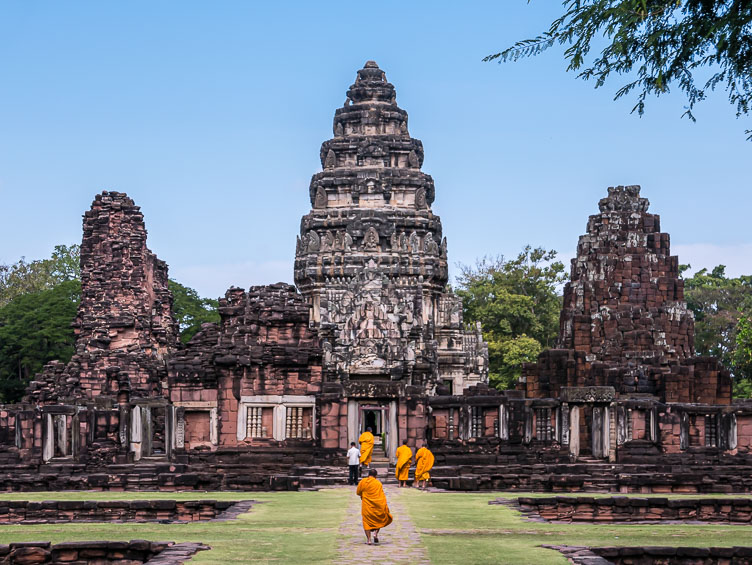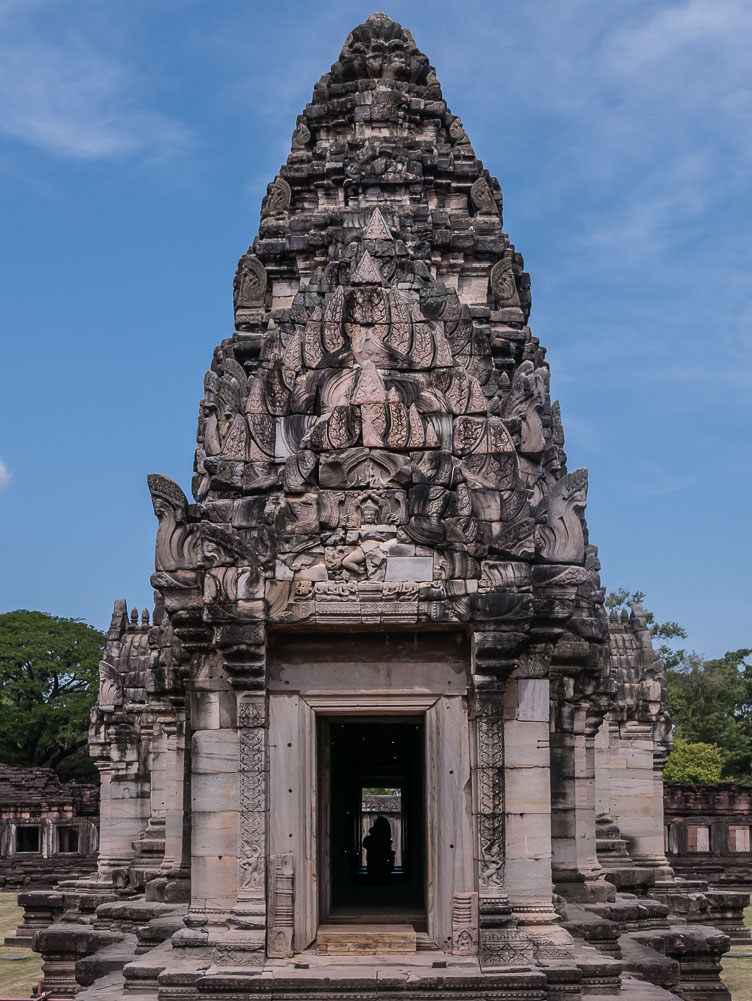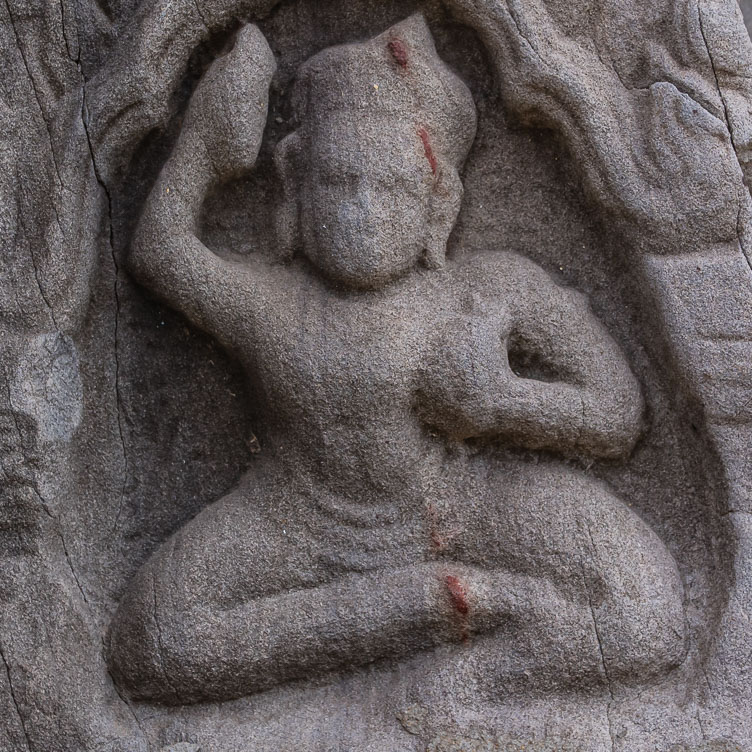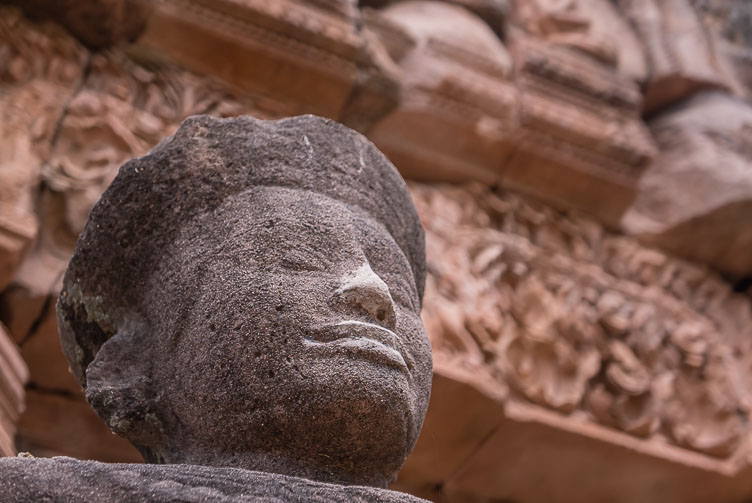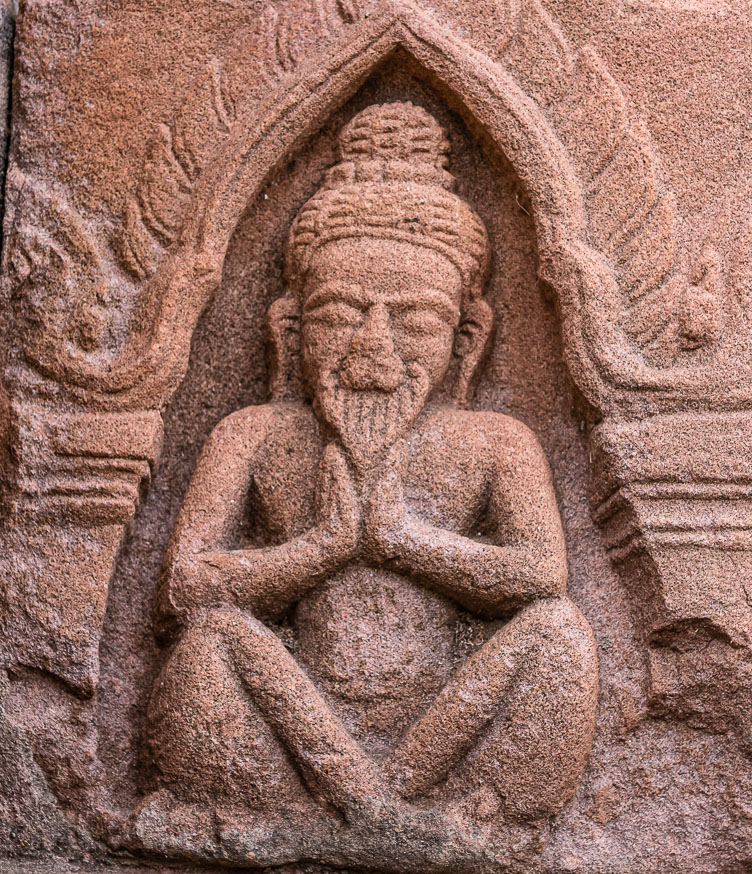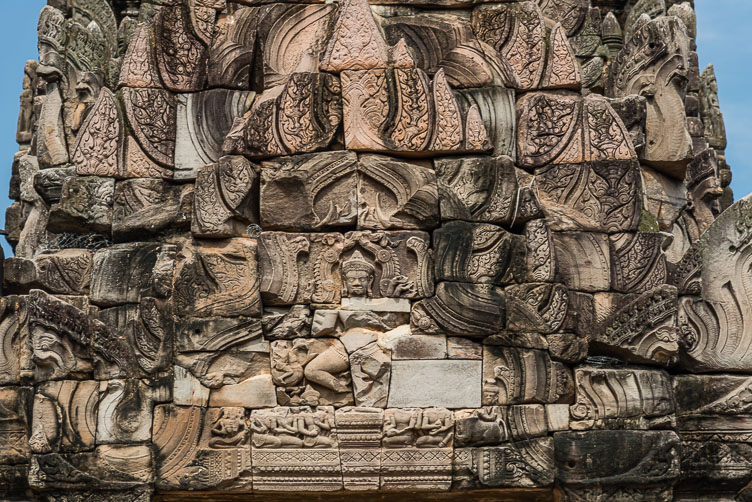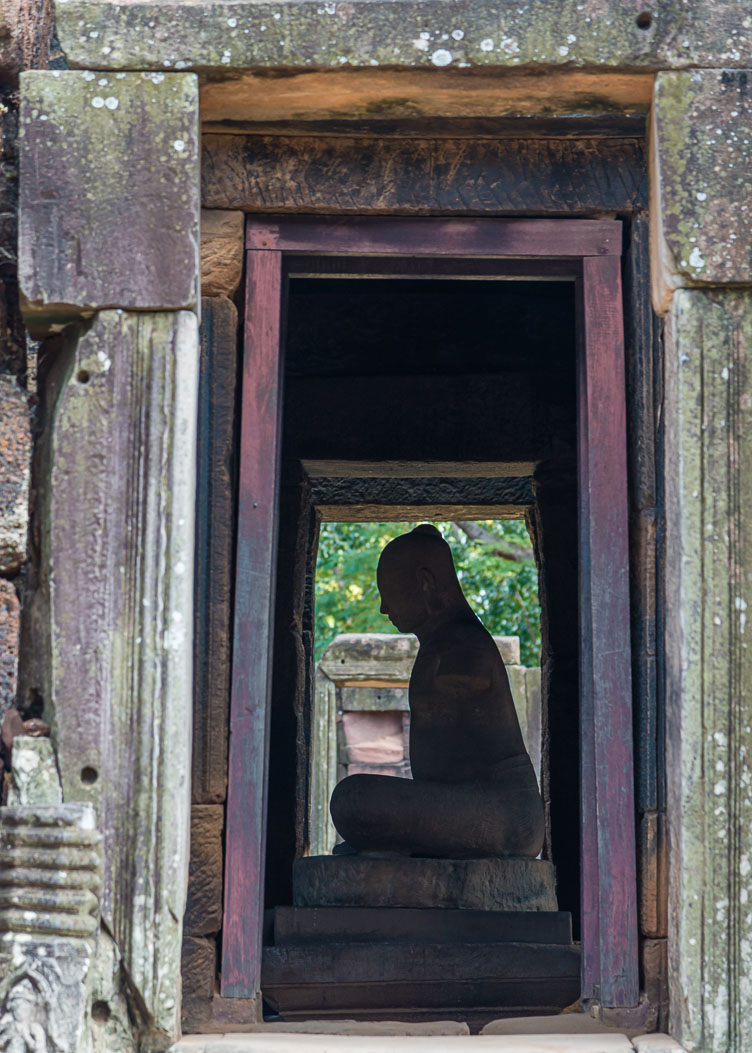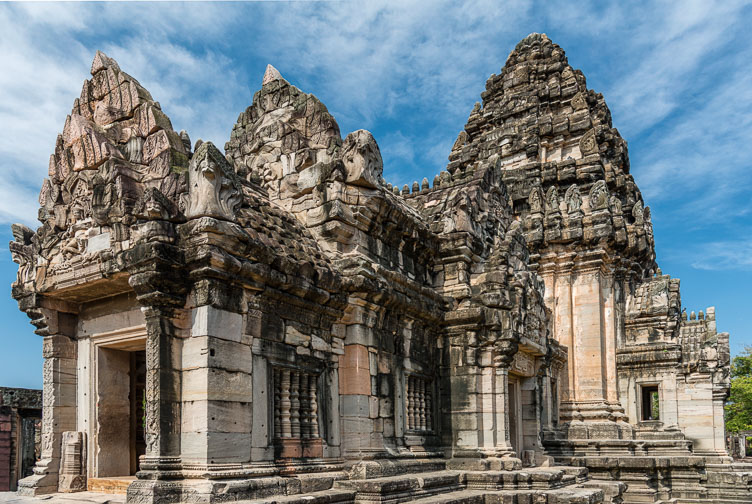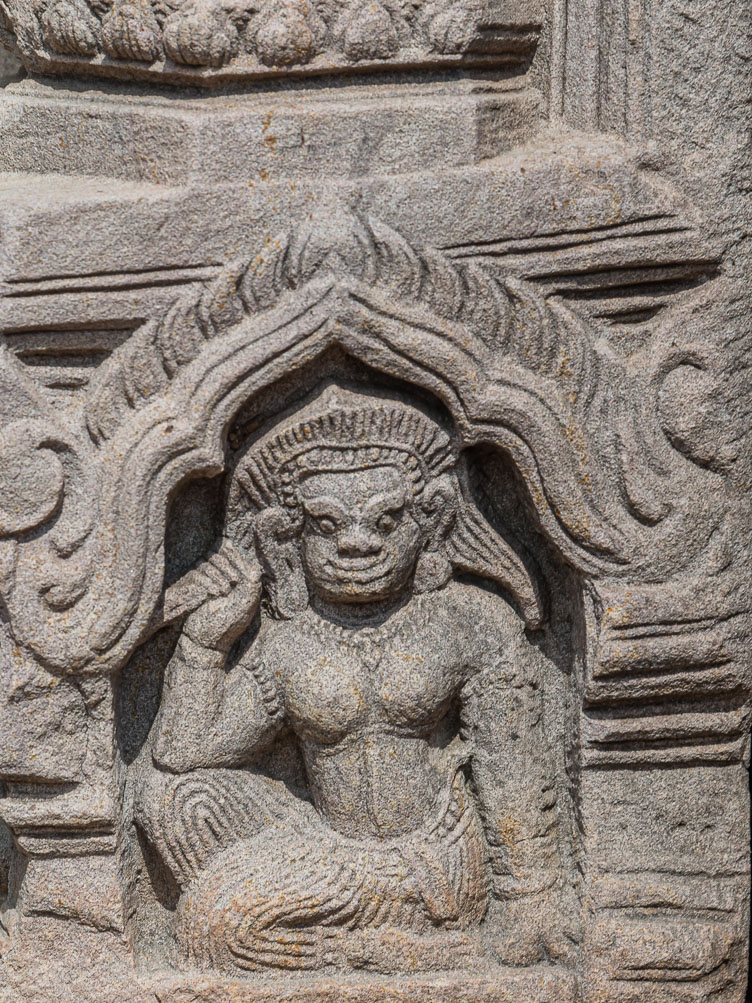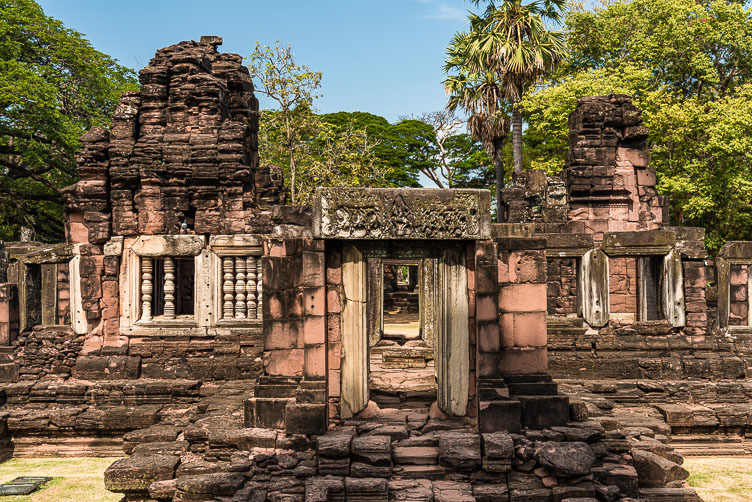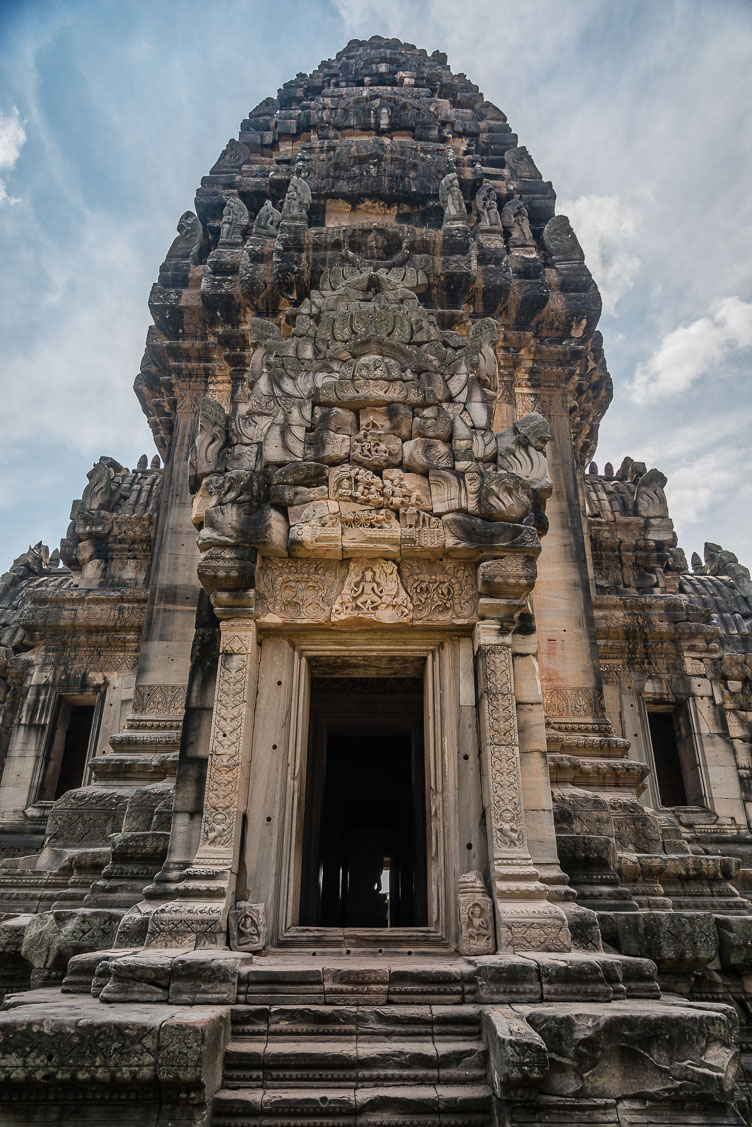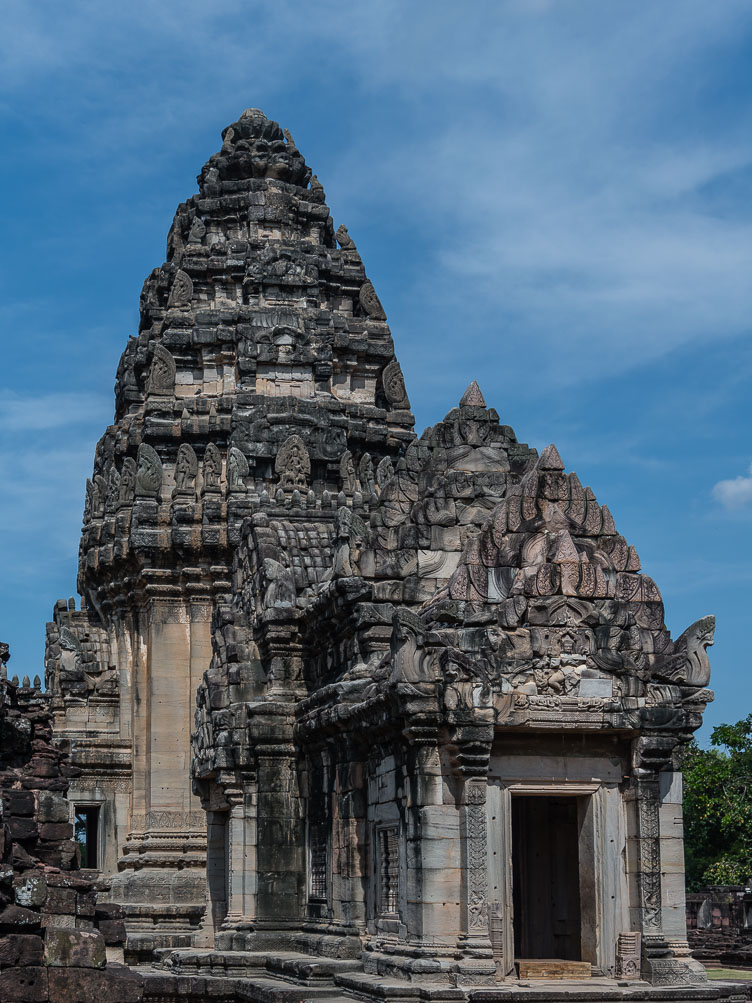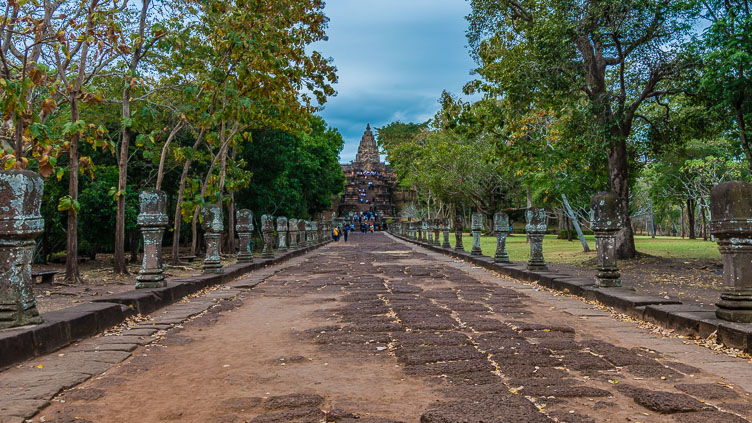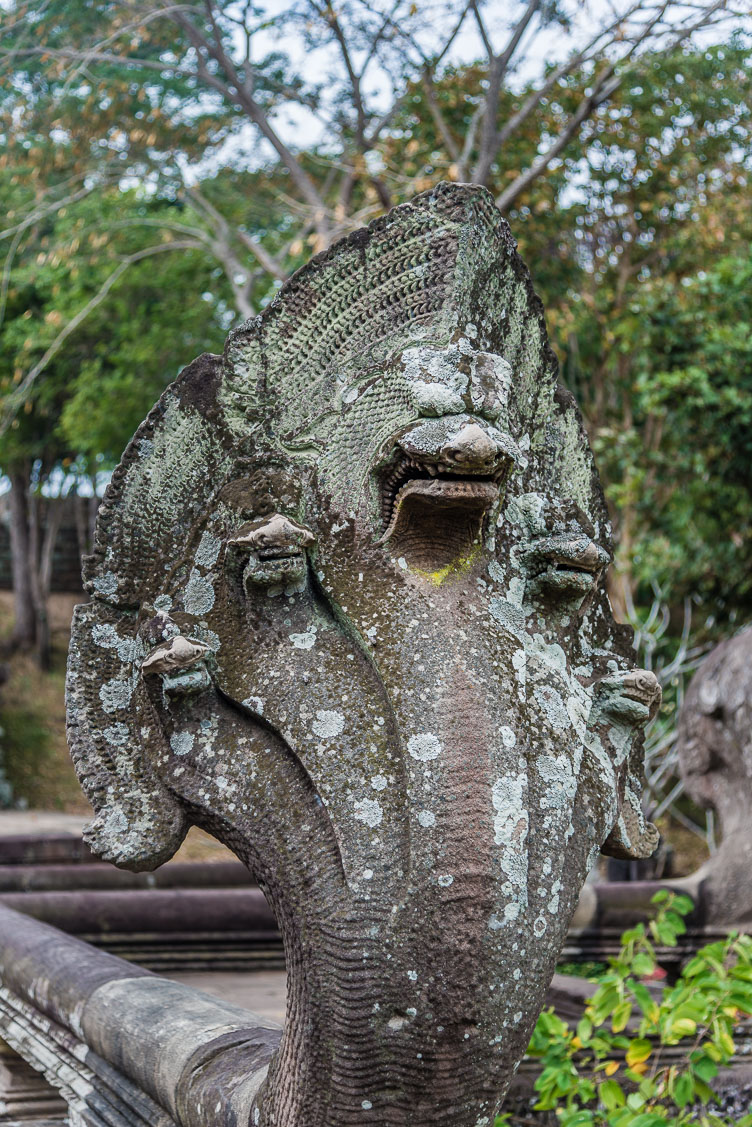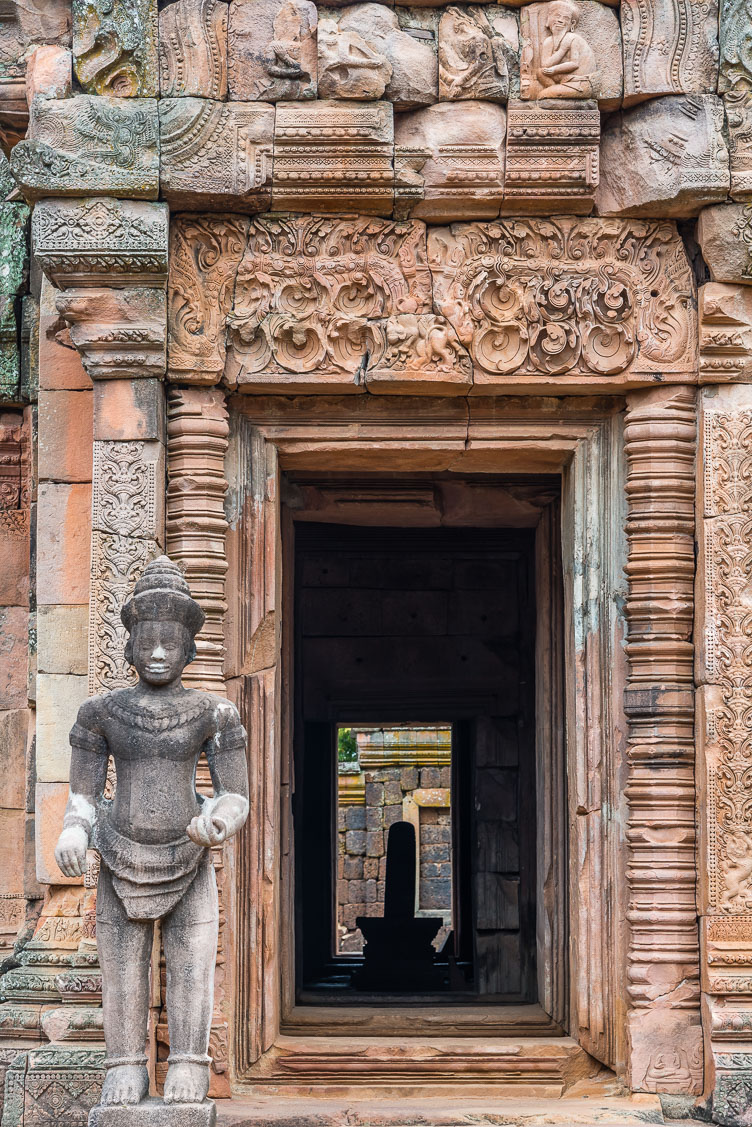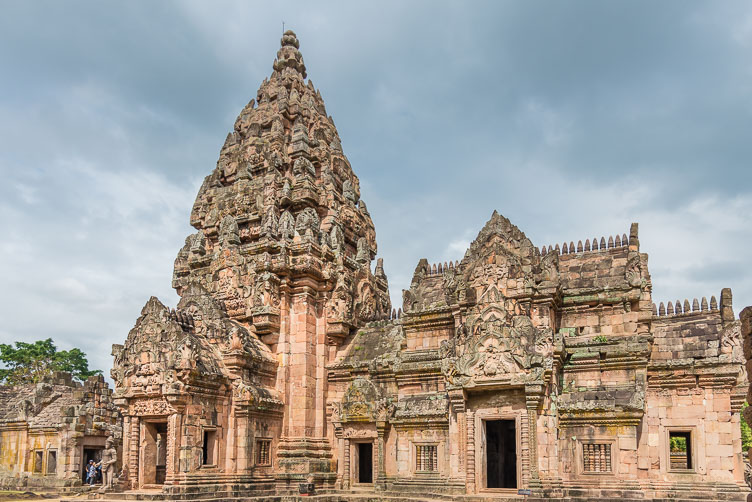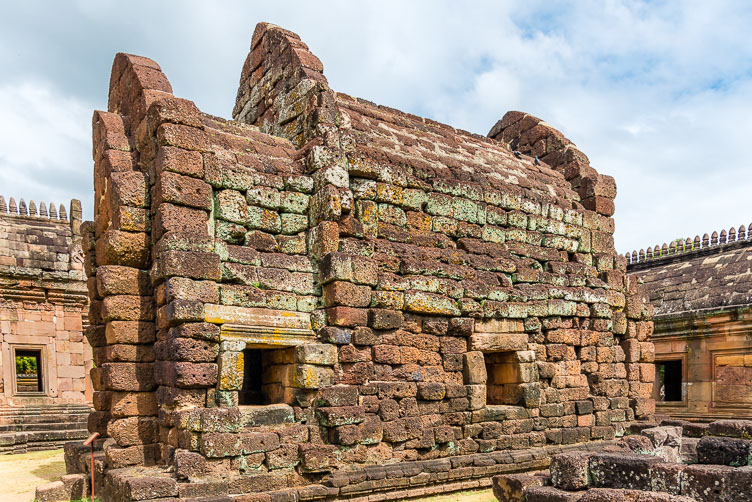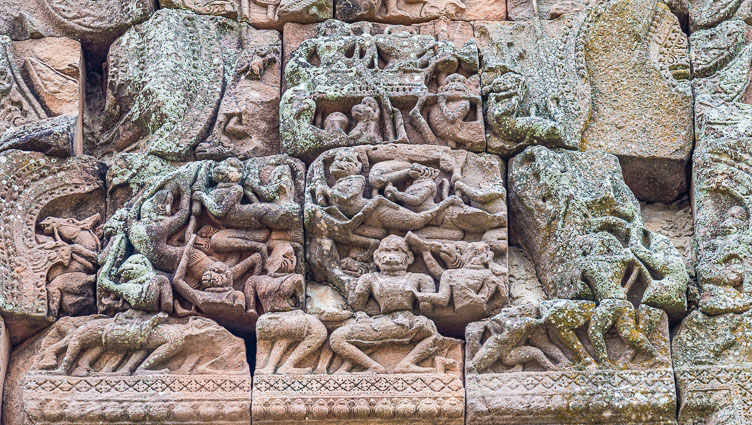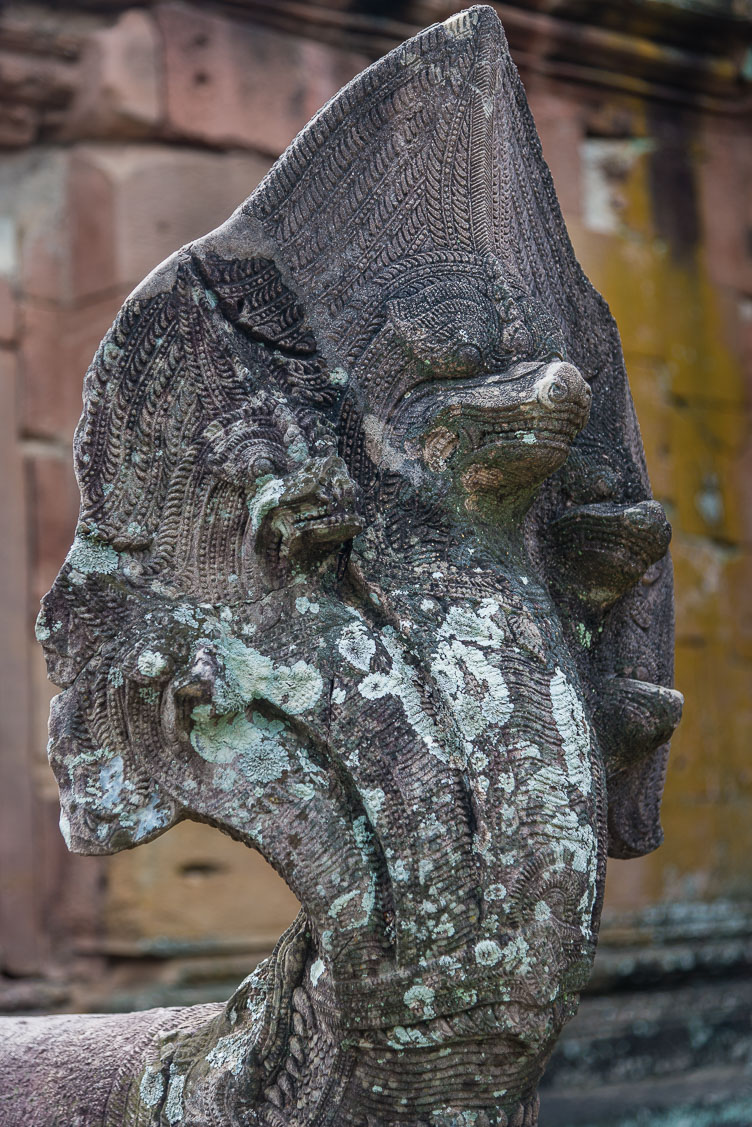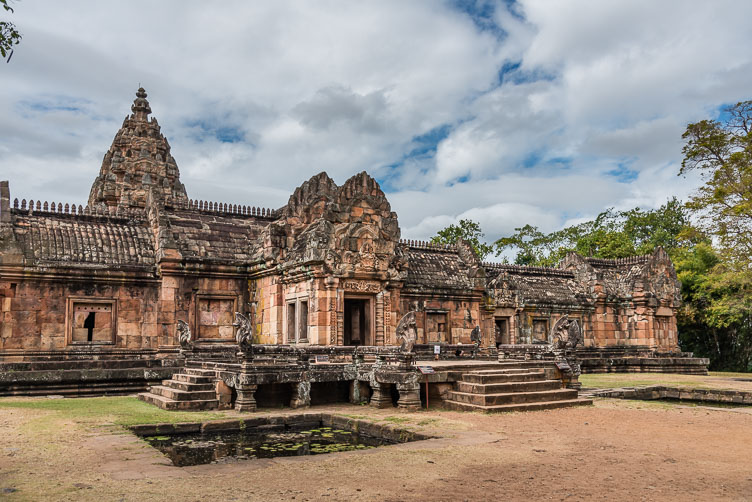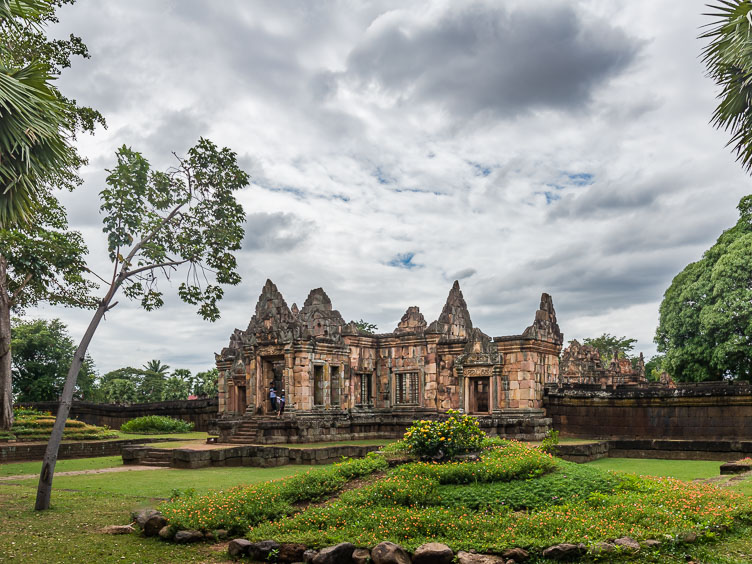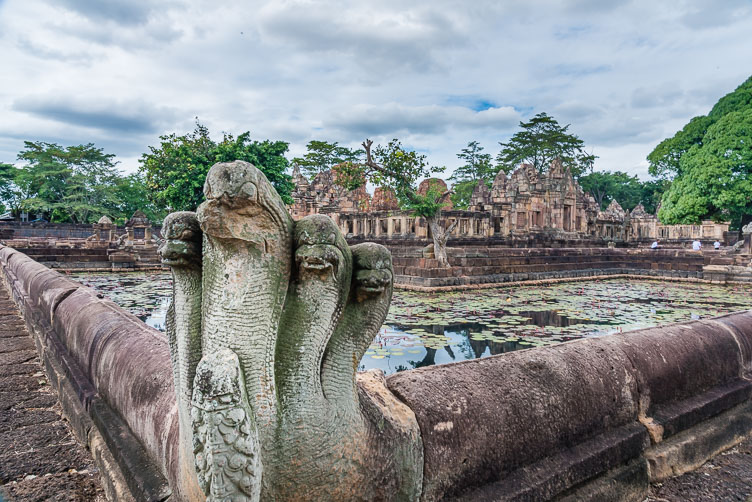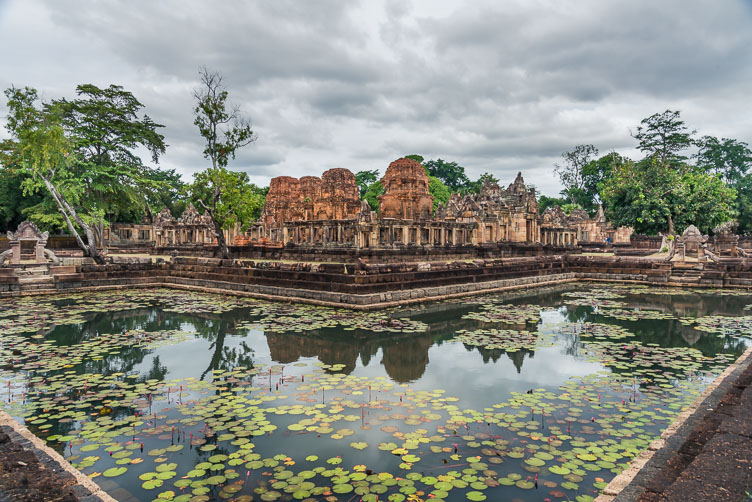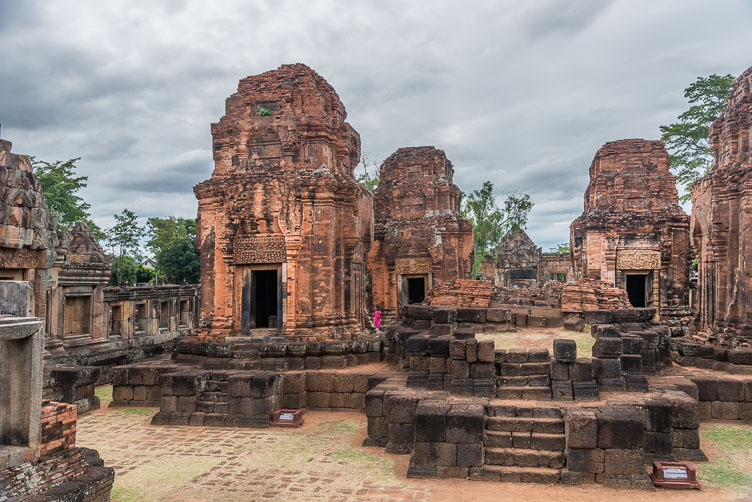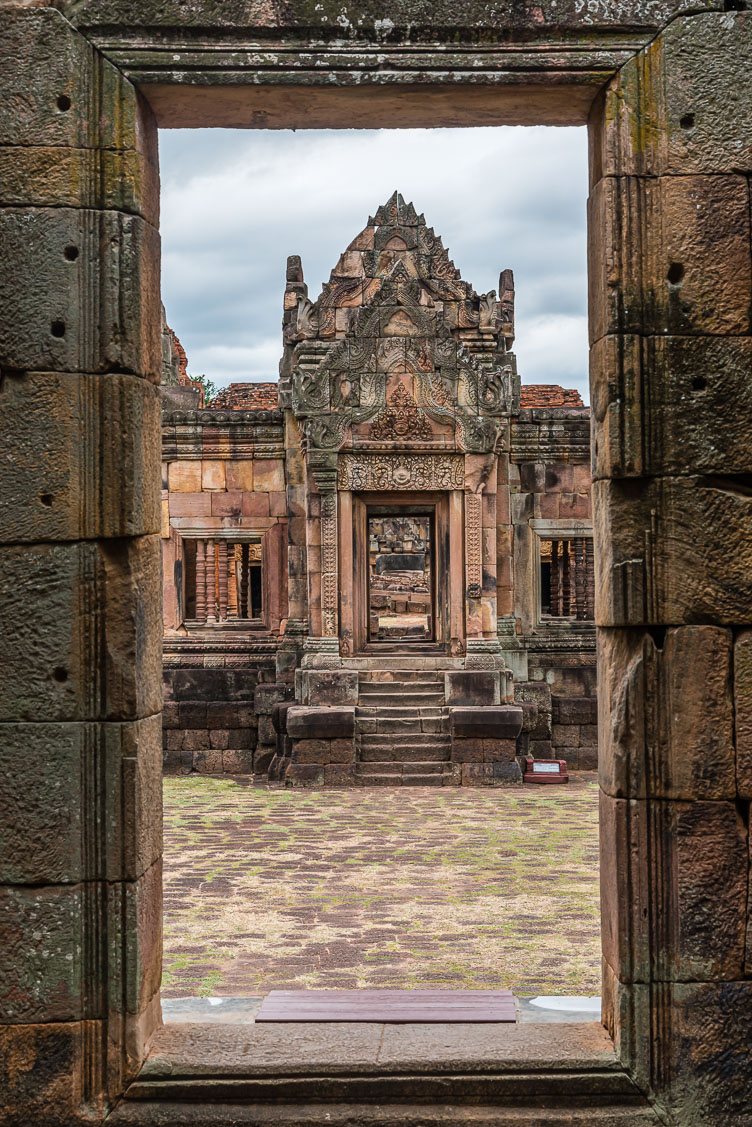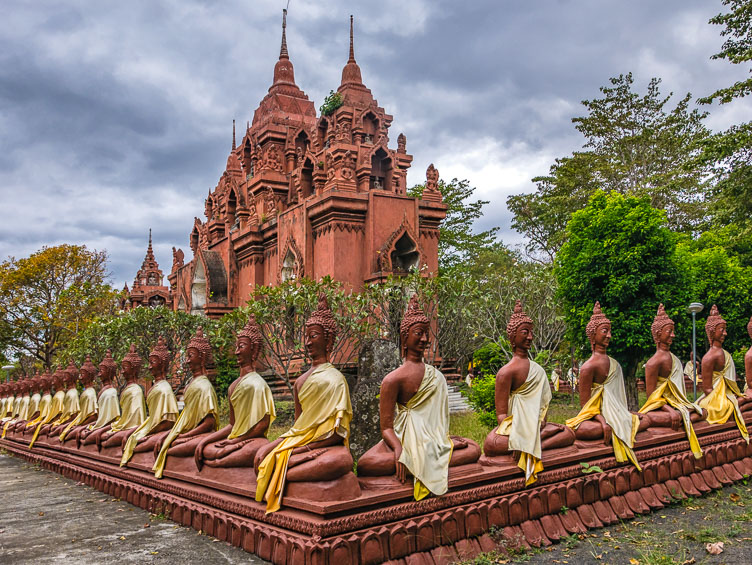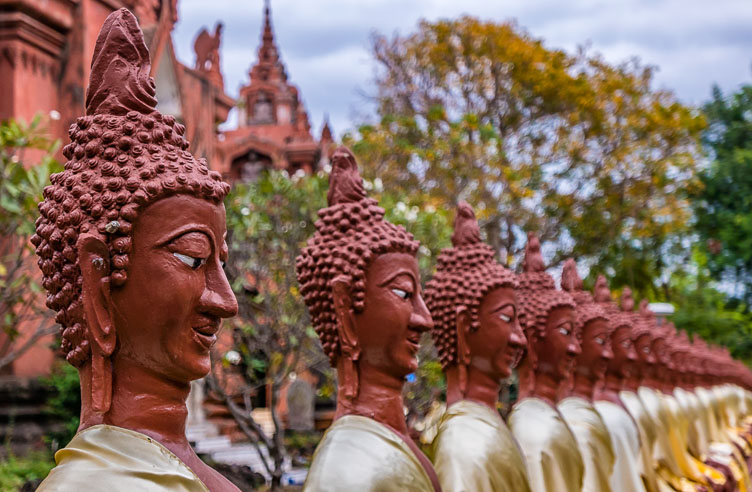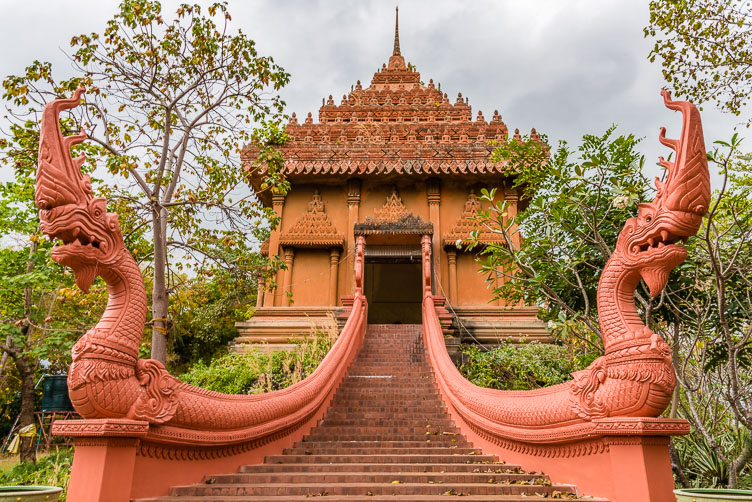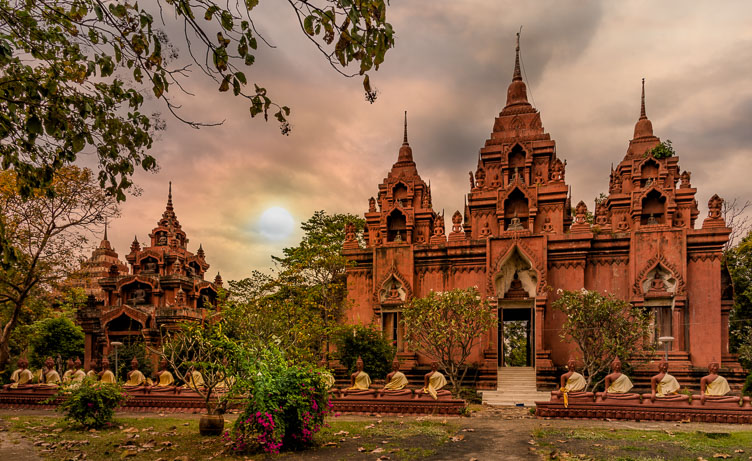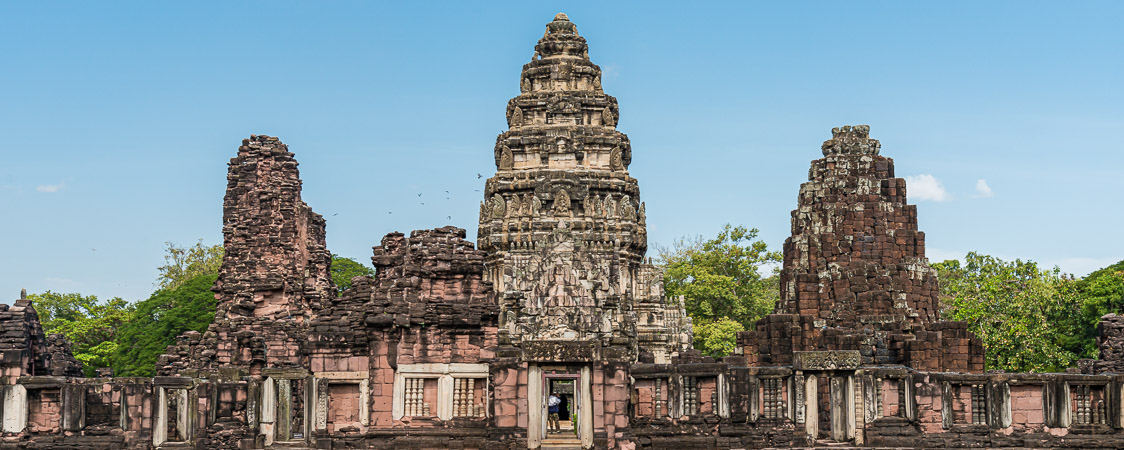
Angkor Wat is, of course, by far the most important temple complex left by the Khmer. But the Khmer Empire reached deep into Thailand at its peak. In the province of Nakhon Ratchasima there are two locations where beautiful and relatively little visited Khmer monuments can be seen: Phanom Rung with the nearby Prasat Muang Tam and Phimai, not far from it.
Phanom Rung historical park
This is the largest and best restored Khmer monument in Thailand. Beautifully situated on top of a truncated volcano and with the characteristic Khmer promenades, Naga bridges, towers and reliefs, this is a true jewel of Khmer architecture. The temple was set up as a Hindu monument to Shiva between the 10th and 13th century. The main part dates from the reign of King Suriyavarman II (r AD 1113-50); the first period of Angkor architecture. The complex is built in such a way that the sun shines through all 15 doors of the shrine four times a year.
One of the most remarkable aspects of Phanom Rung is the boardwalk that leads to the main gate. A cross-shaped platform is followed by a 160-meter-long processional path, flanked by sandstone pillars with early Angkor-style lotus-bud tops. This is followed by three Naga bridges decorated with five-headed mythical snakes (Naga). Finally, a staircase leads to the east gallery and the main tower.
Prasat Muang Tam
Not far from Phanom Rung is Prasat Muang Tam. This structure dates from the late tenth or early eleventh century and was sponsored by the Khmer king Jayavarman V. The main building, which probably represents Mount Kailash, could not be rebuilt. Four L-shaped ponds, representing the oceans, surround the prang (spiers) with the five-headed Nagas at the corners.
Phimai
The aforementioned temples are located in the countryside, Phimai is located in the middle of the town of the same name. The processional road towards the temple from what was once the outer gate is now a street in the town. Reminiscent of Cambodia's Angkor Wat, Prasat Phimai once stood on an important trade route connecting the Khmer capital of Angkor to the northern reaches of the empire. Like many Angkor temples, Phimai is based on a mix of religions. Started as a Buddhist temple, it contains numerous reliefs of Hindu deities.

